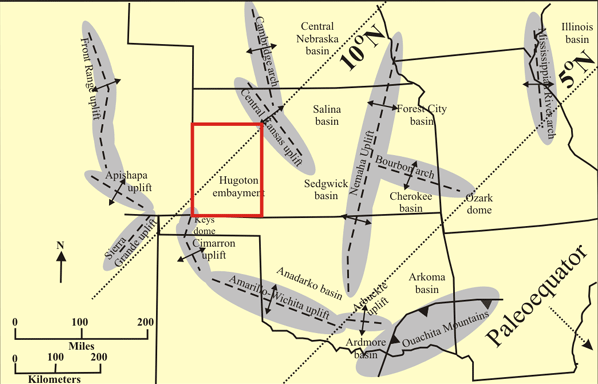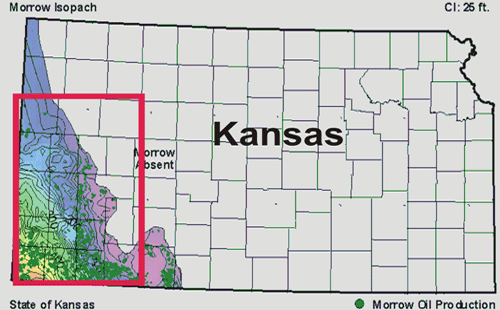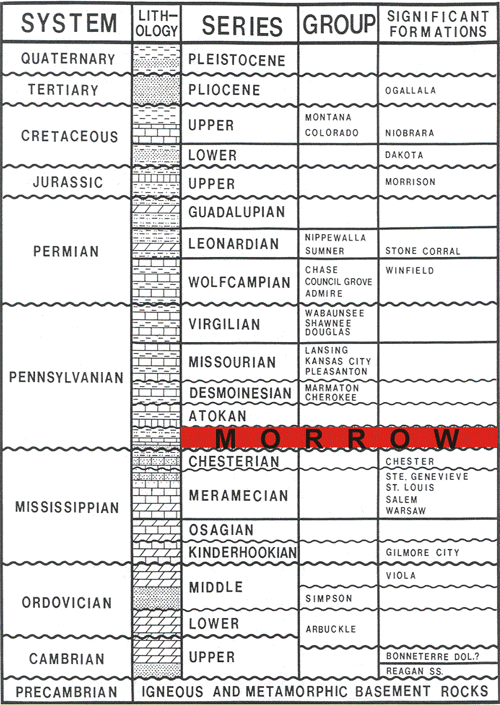Depositional Environments of Lower Pennsylvanian Reservoir Sandstones, Southwestern Kansas
Galo A. Salcedo, Kansas Geological Survey, The University of Kansas
Abstract
Lower Pennsylvanian Morrow sandstone in southwestern Kansas have produced
hydrocarbons for more than sixty years, and are still active targets for
exploration and development. The Morrow sandstone was deposited across the
Hugoton embayment, a shelf extension of the Anadarko Basin, as a series
of five depositional sequences above a pre-Pennsylvanian regional unconformity.
A large database of wireline logs and cores was used to establish a regional
sequence-stratigraphic framework. Three depositional sequences associated
with incised valleys are recognized (IV-1, IV-2, and IV-3). Incised valleys
are oriented north-south, extend for 60 to 90 km, and range from 30 to 60
km wide. Each sequence is infilled with up to 40 meters of sediments, which
thicken southward. Depositional systems composed of fluvial, estuarine and
shallow marine lithofacies fill each incised valley. In older incised valleys
(IV-1 and IV-2) estuarine facies predominate in a northward direction, while
nearshore marine facies increase in the opposite direction. The youngest
incised valley (IV-3) is predominantly estuarine. In the north part of the
study area, and within depositional sequence 4, a carbonate buildup is characterized
by numerous shoaling upward parasequences of open marine subtidal, minor
silisiclastic (nearshore marine and estuarine) and paleosol facies. The
carbonate buildup is up to 40 meters thick, and covers an area 40 km wide
and 120 km long.
Reservoir quality in Morrow sequences is dependent on location within an incised valley complex. An enhanced understanding of deposional environments and stratigraphy of the Morrow sandstone can contribute to improved exploration and development.
Location Maps and Stratigraphic Chart of Study Area



http://www.kgs.ku.edu/PRS/publication/2004/AAPG/LPenn/p1-01.html
Last Modified December 2004